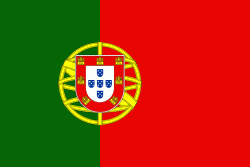Carvoeiro (Carvoeiro)
 |
There are two beaches at Carvoeiro, including Carvoeiro Beach (Praia de Carvoeiro) and Paradise Beach (Praia do Paraíso).
Formed from a picturesque fishing village, with a long history of settlement, the parish slowly developed into a tourist area in the municipality of Lagoa, owing to its number of sand beaches protected by cliffs. There are vestiges of human settlement dating to the Roman occupation of the peninsula, as well as early naval activity in the area.
The region was historically unspared from frequent pirate and military assaults along the coast, with a number of naval battles occurring off the coast. Most notably, in 1544, a squadron of ships under D. Pedro da Cunha, battled the Turkish barbary coast pirate, Xarramet. From historical records, the earliest settlement originated in the name Caboiere, an old name for a hamlet of fishermen from the Islamic-medieval period. For most of its history, fishing was the mainstay of the local economy.
However, from the 1960s onward, tourism gradually became the economic base of the area, with many new hotels, apartment complexes, shops, roads, and significant improvements to infrastructures completed to attract visitors to the metropole. An insight into the effects of mass tourism on the Algarve, centred on Carvoeiro, was written by Patrick Swift, detailing the community before the arrival of mass tourism. Swift was an artist and long-time resident of Carvoeiro who founded Porches Pottery.
Carvoeiro became a separate/independent parish in 1985 and raised to the status of town on 19 April 2001.
Map - Carvoeiro (Carvoeiro)
Map
Country - Portugal
 |
 |
| Flag of Portugal | |
One of the oldest countries in Europe, its territory has been continuously settled, invaded and fought over since prehistoric times. The territory was first inhabited by pre-Roman and Celtic peoples who had contact with Phoenicians, ancient Greeks and Carthaginians. It was later ruled by the Romans, followed by the invasions of Germanic peoples and the Islamic invasion by the Moors, whose rule was eventually expelled during the Reconquista. Founded first as a county of the Kingdom of León in 868, gained its independence as the Kingdom of Portugal with the Treaty of Zamora in 1143.
Currency / Language
| ISO | Currency | Symbol | Significant figures |
|---|---|---|---|
| EUR | Euro | € | 2 |
| ISO | Language |
|---|---|
| PT | Portuguese language |















